Fishing Spear 2 Pieces Item Number: E2249-0 from the National Museum of Natural History
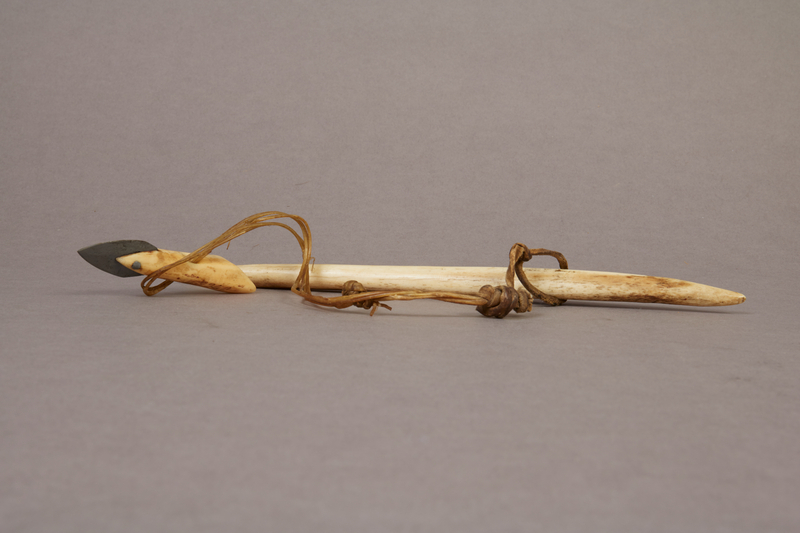
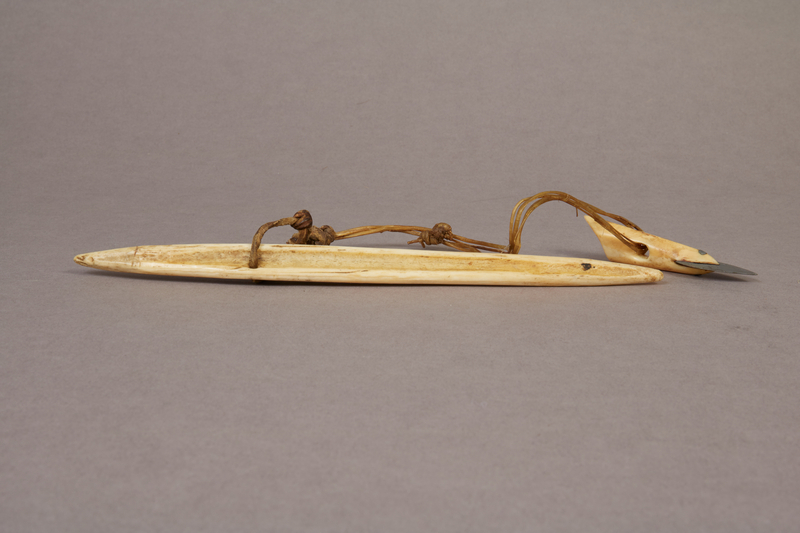
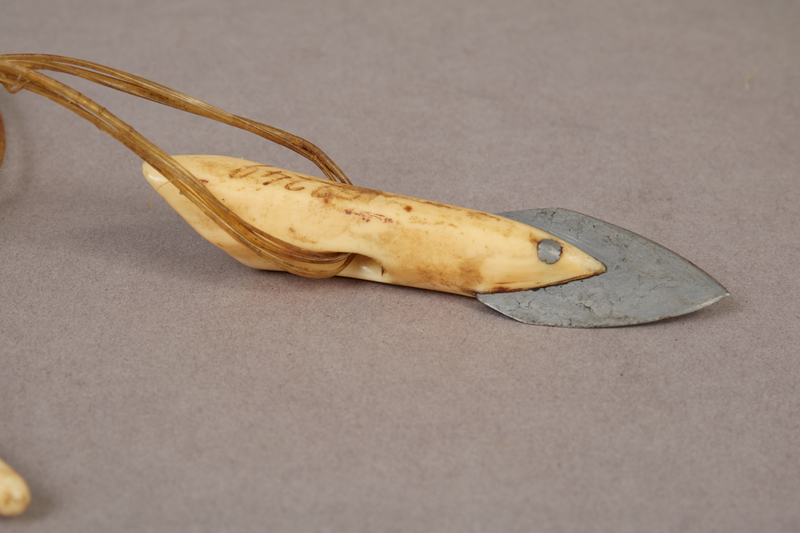
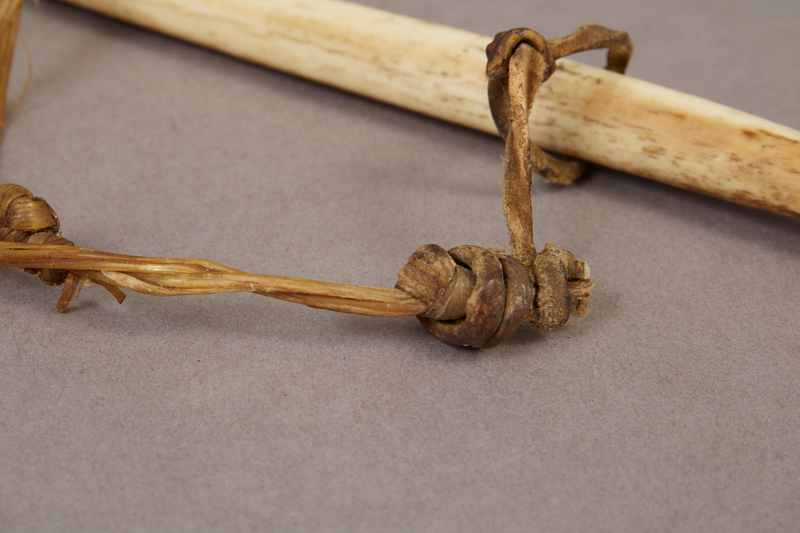
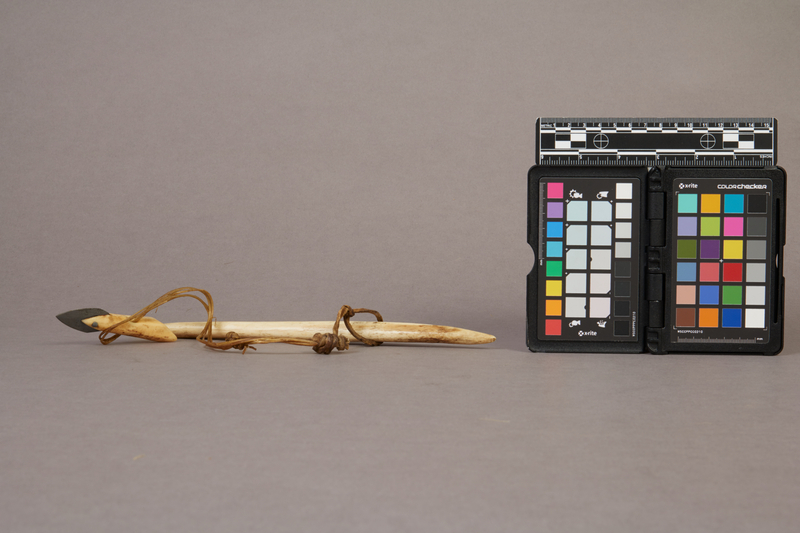
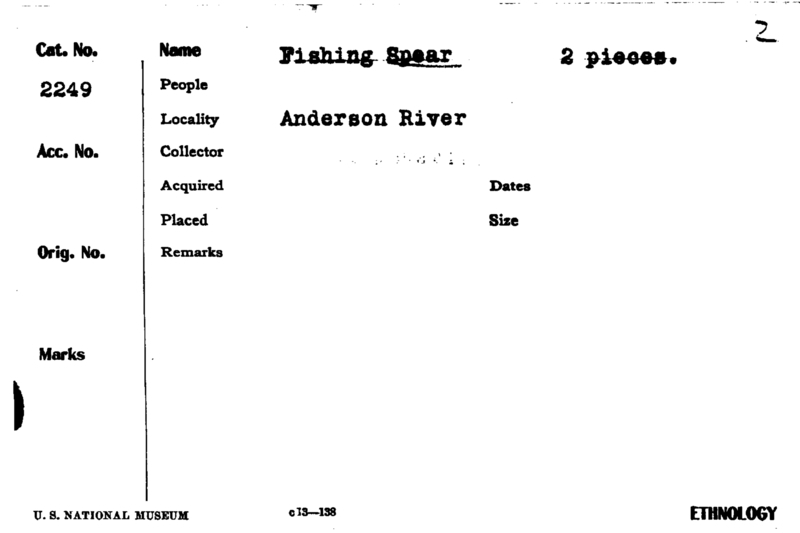

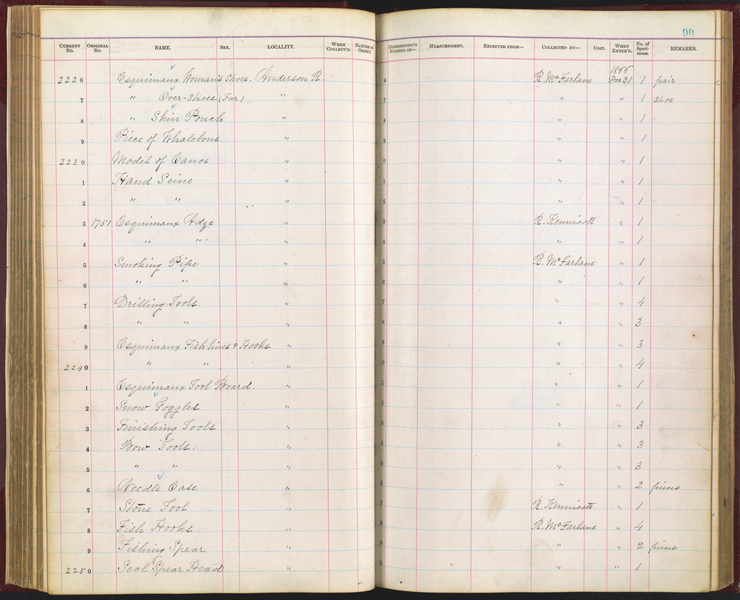
Notes
Source of the information below: Inuvialuit Pitqusiit Inuuniarutait: Inuvialuit Living History, The MacFarlane Collection website, by the Inuvialuit Cultural Resource Centre (ICRC), Inuvik, N.W.T., Canada (website credits here http://www.inuvialuitlivinghistory.ca/posts/12 ), entry on this artifact http://www.inuvialuitlivinghistory.ca/items/5 , retrieved 1-3-2020: Harpoon head and foreshaft. The head is made from ivory. It has a spur at one end, a blade slot at the other end, and a line hole that passes through the head in the same plane as the blade slot. A trapezoidal-shaped iron blade is held in the slot by an iron rivet. The relatively short foreshaft is made of bone. It is blunt at the end that was meant to be inserted into the socket of the harpoon head, and pointed at the other end, where it would have been inserted into a socket piece. Seemingly, the foreshaft was not meant to swivel in the foreshaft, and may have been made for a thowing harpoon. A length of babiche is looped several times through the line hole of the harpoon head, and is attached to a hide thong that is in turn attached to the foreshaft. These items were originally identified in the Smithsonian Institution's catalogue as parts of a 'fish spear', but the size and style of the harpoon head is consistent with harpoon heads used for hunting sea mammals. More information here: http://www.inuvialuitlivinghistory.ca/item_types/30: Harpoons are used for hunting sea mammals such as seals and whales. They have a point, or 'head', that separates from the rest of the harpoon and remains attached to the quarry. A line running from the harpoon head is held by the hunter or attached to a float, allowing the animal or fish to be retrieved. Thrusting harpoons, used for hunting seals at breathing holes on the sea ice, generally have long foreshafts that swivel inside a socket piece attached to the harpoon shaft in order to release the harpoon head. Throwing harpoons used for hunting seals and whales in open water normally have foreshafts that are more securely fixed to the harpoon shaft. Both types are found in the MacFarlane Collection.
Item History
- Made in Northwest Territories, Canada
- Collected in Northwest Territories, Canada
- Received from Roderick R. MacFarlane on December 21, 1866
What
- Name
- Fishing Spear 2 Pieces
- Identification Number
- E2249-0
- Type of Item
- harpoon
Who
- Culture
- Eskimo, Inuit and Inuvialuk
- Received from
- Roderick R. MacFarlane
Where
- Holding Institution
- National Museum of Natural History
- Made in
- Northwest Territories, Canada
- Collected in
- Northwest Territories, Canada
When
- Acquisition Date
- on December 21, 1866
Other
- Accession Number
- 66A00090